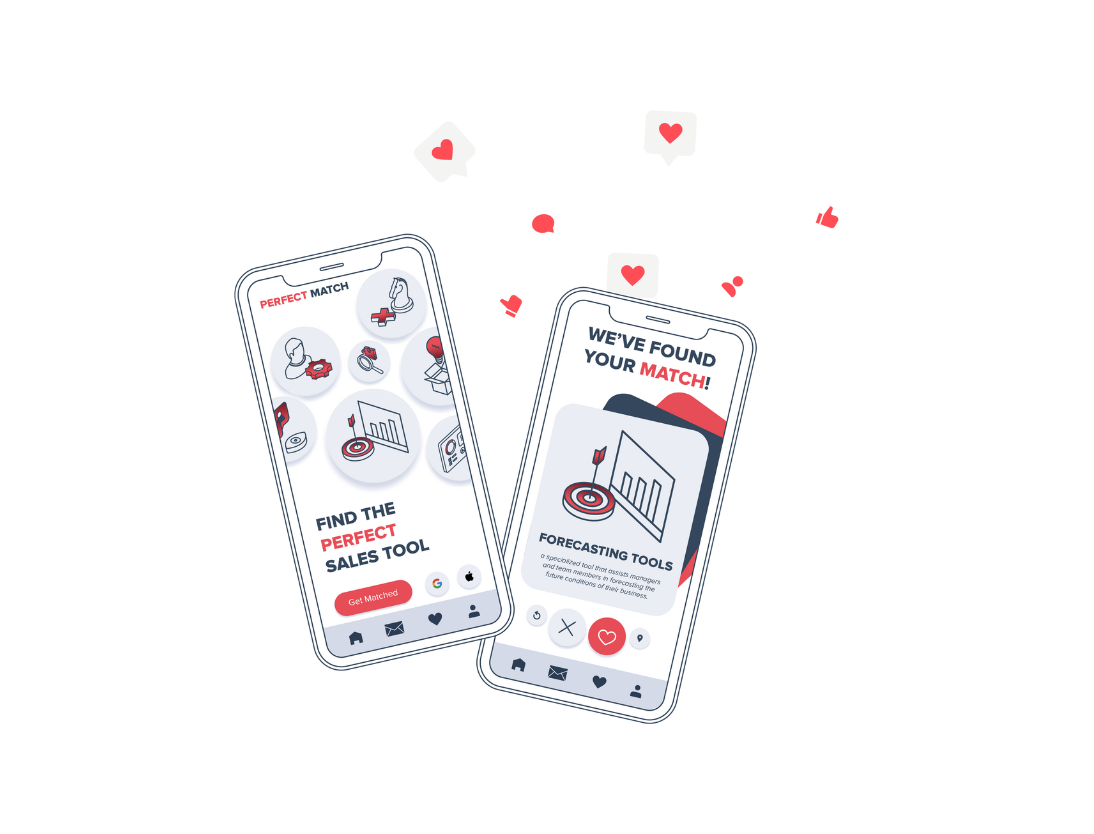In this article, we'll explore the importance of measuring the ROI of customer acquisition strategies, the acquisition metrics that help to achieve this, and share an example of how you can calculate the ROI of your customer acquisition strategy.
As companies aim for growth and expansion, customer acquisition becomes a crucial aspect of their success. Developing and executing an effective customer acquisition strategy is essential to attract new customers and grow your customer base.
At Huble, we often work with our clients to improve their customer acquisition strategies. One key aspect of this is measuring the ROI of these strategies. By understanding the effectiveness of customer acquisition efforts, they can make informed decisions about where to allocate resources and how to optimise their approach.
For example, if your company spends a significant amount of money on marketing and advertising efforts to attract potential customers - without measuring the ROI of your customer acquisition strategy, you might continue to invest in certain marketing channels that are not generating a significant return, resulting in wasted resources and lost revenue.
However, by measuring the ROI of your customer acquisition strategy, you can identify which marketing channels are generating the most revenue, so you can spend more money where it's getting you the most return and stop wasting money on channels that aren't working for you.
Measuring the ROI of your customer acquisition strategy is therefore critical to evaluating the success of your efforts and optimise them for better results.
Understanding Acquisition Metrics
Effective customer acquisition strategies are crucial to the growth and success of any business.
However, it is equally important to measure the effectiveness of these strategies to understand their ROI. This is where acquisition metrics come into play.
Acquisition metrics are KPIs used to measure the effectiveness of customer acquisition strategies. They help businesses understand how much they are spending on acquiring customers and how much revenue those customers are generating.
By analysing these metrics, businesses can determine which acquisition strategies are working and which ones need improvement.
Here are some of the most important acquisition metrics that businesses should track:
Customer Acquisition Cost (CAC)
CAC refers to the cost incurred in acquiring a new customer. This includes all expenses related to marketing, sales, and advertising that are directly tied to acquiring new customers.
Calculating CAC involves dividing the total costs incurred in customer acquisition by the number of new customers acquired in a specific time period. For instance, if a company spends £100,000 in advertising and acquires 1,000 new customers, the CAC would be £100.
Measuring CAC is essential because it helps companies determine the profitability of their customer acquisition strategies. By tracking CAC, businesses can identify which channels are most effective in acquiring new customers and optimise their marketing budget accordingly.
A high CAC may indicate that a company is overspending on customer acquisition, while a low CAC may suggest that the business is not investing enough in marketing and sales efforts.
To determine if your CAC is high or low, compare it to industry benchmarks and historical data. Additionally, you’ll need to analyse the sources of your customer acquisition to determine which channels are driving the highest acquisition costs.
To optimise CAC, companies can focus on improving their targeting, messaging, and marketing channels.
For example, refining customer personas and targeting high-value customers can reduce CAC.
Companies can also experiment with different marketing channels to identify the most cost-effective approach or explore generating leads with the freemium business model.
Customer Lifetime Value (CLTV)
CLTV is the amount of money a customer is expected to spend with a company over the course of their lifetime. It's an important metric for understanding the long-term value of a customer and for determining how much a company should invest in acquiring new customers.
To calculate CLTV, you need to know the average value of a customer's purchase, the frequency of purchases, and the length of time the customer is expected to continue purchasing from the company.
The formula for CLTV is:
CLTV = Average Purchase Value x Purchase Frequency x Customer Lifespan
Once you have calculated CLTV, you can use it to determine how much money to invest in customer acquisition. If the CLTV is high, it may be worth investing more in customer acquisition to acquire new customers, while if it's low, it may be better to focus on retaining existing customers.
There are several strategies for optimising CLTV, including:
- Increasing the average purchase value by offering upsells and cross-sells.
- Increasing the frequency of purchases by offering loyalty programs and incentives.
- Increasing the length of the customer lifespan by improving customer service and offering personalised experiences.
By optimising CLTV, you can increase your revenue and profitability while also improving customer satisfaction and loyalty.
Churn rate
Churn rate is a crucial acquisition metric that measures the rate at which customers stop doing business with a company over a given period of time.
Imagine a bucket with a big hole. Just as it loses water faster than it can be filled, a business with a high churn rate is losing customers at a faster rate than it can acquire new ones.
This can be problematic for the long-term growth and success of the business, as it indicates that something may be causing customers to leave. By measuring and reducing churn rate, businesses can plug the leaks in their customer base and work to retain more customers over time.
To calculate churn rate, divide the number of customers lost over a certain period by the number of customers at the beginning of the same period. For instance, if a company started with 500 customers and lost 50 over the course of a month, their churn rate would be 10%.
There are several ways to optimise churn rate, including identifying and addressing pain points or issues that are causing customers to leave, such as improving product quality, reducing friction in the buying process, or addressing customer complaints.
For example, a subscription-based service can offer discounts or extended free trials to customers who are at risk of churning. This can incentivise them to continue using the service and increase their lifetime value.
By optimising churn rate, companies can retain existing customers and reduce the cost of acquiring new ones - which is between 5 to 25 times more expensive than retaining existing ones - ultimately increasing revenue over the long term.
Other Acquisition Metrics
In addition to CAC, CLTV, and Churn Rate, there are other important acquisition metrics to consider when measuring the effectiveness of customer acquisition strategies. Here are some of the most important ones:
- Order Frequency: This metric measures how often a customer makes a purchase from your business. The higher the order frequency, the more loyal the customer is likely to be. To optimise this metric, businesses can offer loyalty programs or incentives for repeat purchases.
- Conversion Rate: This metric measures the percentage of website visitors who take a desired action, such as making a purchase or filling out a form. To optimise this metric, businesses can improve website design and user experience, offer compelling calls-to-action, and target the right audience.
- Average Order Value: This metric measures the average value of each customer transaction. To optimise this metric, businesses can offer upsells or cross-sells during the checkout process, and create promotions that encourage customers to spend more.
- Referral Source: This metric tracks where new customers come from, such as search engines, social media platforms, or referrals from other customers. To optimise this metric, businesses can invest more resources into the channels that are bringing in the most new customers.
- Marketing Percentage of CAC: This metric measures the percentage of CAC that is spent on marketing efforts. To optimise this metric, businesses can reduce marketing costs by improving targeting and efficiency, or increasing the number of customers acquired through word-of-mouth marketing or other low-cost channels.
- Loyalty Rate: This metric measures the percentage of customers who remain loyal to your business over a period of time. It is similar to churn rate as both are metrics for understanding customer behaviour, but while loyalty rate measures customer retention, churn rate measures customer attrition. To optimise this metric, businesses can improve customer service, offer personalised experiences, and provide incentives for repeat purchases.
- Shopping Cart Abandonment Rate: This metric measures the percentage of customers who add items to their shopping cart but do not complete the purchase. To optimise this metric, businesses can improve the checkout process, offer discounts or incentives to complete the purchase, and follow up with abandoned cart emails.
By tracking and optimising these acquisition metrics, you can gain a deeper understanding of your customer acquisition strategies and make data-driven decisions to improve your ROI.
How to calculate the ROI of your customer acquisition strategy
To measure the ROI of a customer acquisition strategy, you need to determine the financial impact of your customer acquisition efforts.
This can be done by calculating the total revenue generated by the customers acquired through your marketing and advertising efforts and comparing it to the cost of those efforts.
Here's an example of how to calculate ROI for a customer acquisition strategy:
- Determine the CAC and CLTV.
- Multiply the number of customers acquired by the CLTV.
- Subtract the CAC from the revenue generated by the acquired customers and divide the result by the CAC. Then, multiply by 100 to get a percentage.
For example, if the revenue generated by the acquired customers is £500,000 and the total cost of acquisition is £200,000, the ROI would be calculated as follows:
ROI = ((Revenue - Cost)/Cost) x 100
ROI = ((£500,000 - £200,000)/£200,000) x 100
ROI = 150%
This means that for every pound spent on customer acquisition, the company earned £1.50 in revenue.
Optimise your customer acquisition strategy
In today's competitive business environment, having an effective customer acquisition strategy is essential for sustained growth and success. However, it's not enough to simply have a strategy in place. To ensure the strategy is effective, it's crucial to measure its ROI using acquisition metrics.
By measuring the various acquisition metrics, you can identify areas for improvement and make data-driven decisions to optimise your customer acquisition strategies.
At Huble, we have helped hundreds of companies improve the ROI of their customer acquisition through our sales consultancy services. If you want to learn how we can do the same for your company, speak with our team today.













